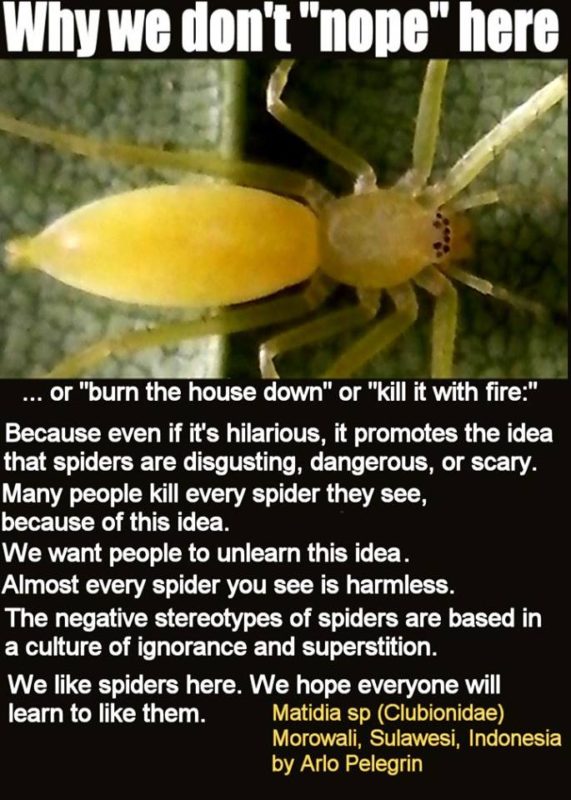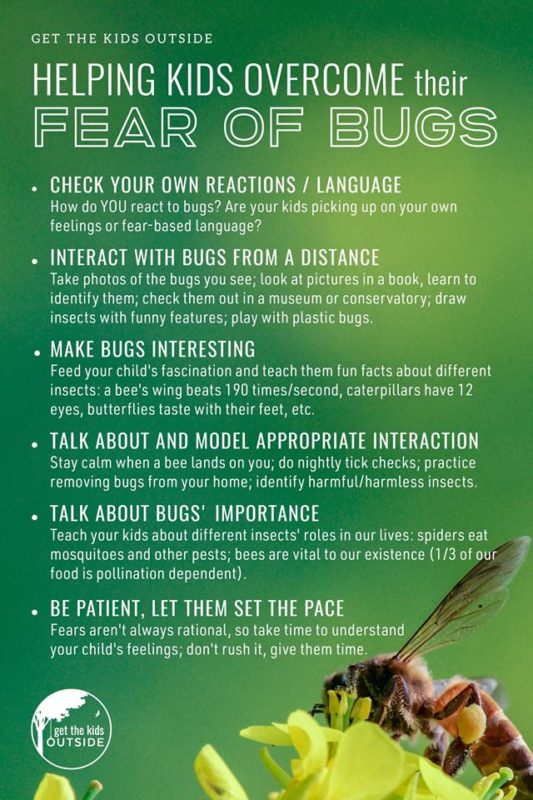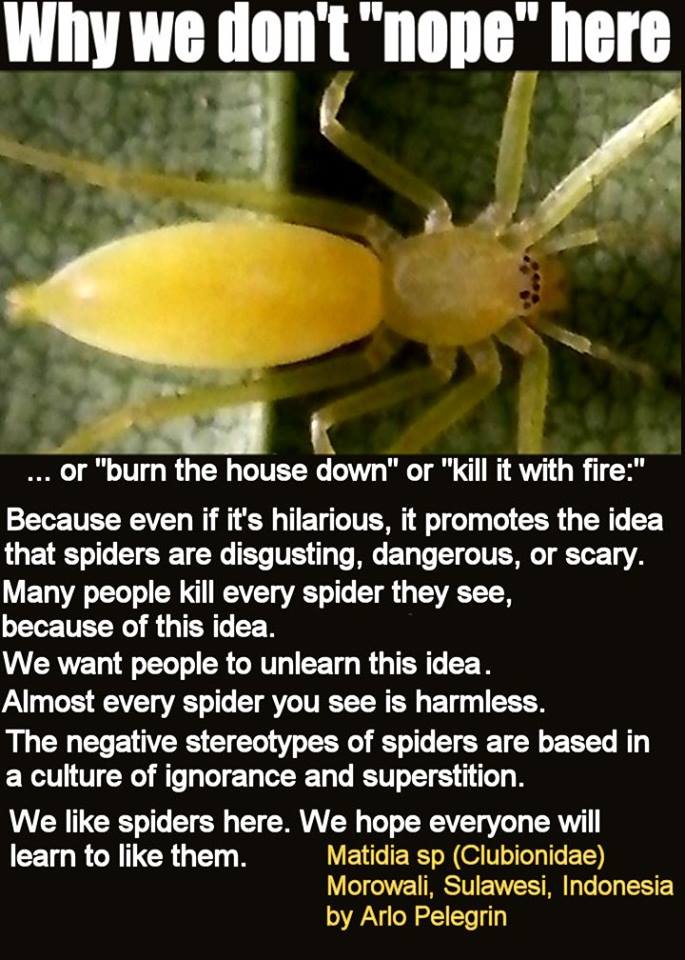
Amazon #ads

Why we dont “NOPE” here … or “burn the house down” or “kill it with fire”.
– Because even if it’s hilarious, it promotes the idea that spiders are disgusting, dangerous, or scary.
– Many people kill every spider they see, because of this idea.
– We want people to unlearn this idea.
– Almost every spider you see is harmless.
– The negative stereotypes of spiders are based in a culture of ignorance and superstition.
– We like spiders here. We hope everyone will learn to like them.
Matidia sp (Clubionidae) Morowali, Sulawesi, Indonesia by Arlo Pelegrin

Helping Kids (And Much Older Kids) Overcome Their Fear of Bugs
– Check your own reactions / language.
How do YOU react to bugs? Are your kids picking up on your own feelings or fear-based language?
– Interact with Bugs from a Distance.
Take photos of the bugs you see; look at pictures in a book, learn to identify them; check themout in a museum or conservatory; draw insects with funny features; play with plastic bugs.
– Make Bugs Interesting.
Feed your child’s fascination and teach them fun facts about different insects: a bee’s wing beats 190 times/second, caterpillars have 12 eyes, butterflies taste with their feet, ect.
– Talk About & Model Appropriate Interaction.
Stay calm when a bee lands on you; do nightly tick checks; practice removing bugs from your home; identify harmful/harmless insects.
– Talk about Bugs’ Importance.
Teach your kids about different insects’ roles in our lives: spiders eat mosquitoes and other pests; bees are vital to our existence (1/3 of our food is pollination dependent).
– Be Patient, Let Them Set The Pace.
Fears aren’t always rational, so take time to understand your child’s feelings; don’t rush it, give them time.-
Did you know:
- The world’s spiders eat 400-800m tonnes of insects every year – as much meat and fish as humans consume over the same period.
- Adult dragonflies mostly eat other flying insects, particularly midges and mosquitoes. They also will take butterflies, moths and smaller dragonflies. The larvae, which live in water, eat almost any living thing smaller than themselves. Larger dragonfly larvae sometimes eat small fish or fry.
- Mantis have enormous appetites, eating various aphids, leafhoppers, mosquitoes, caterpillars and other soft-bodied insects when young. Later they will eat larger insects, beetles, grasshoppers, crickets, and other pest insects. These ferocious-looking praying mantises actually make great pets.
- Wasps eat a wide range of invertebrates including spiders, caterpillars, ants, bees, and flies. It has also been suggested that wasps may prey on nestling birds. Wasps also collect honeydew. Honeydew is produced by a native scale insect.
Links:
– Dance of the Peacock Spider
– Lots of Fun Facts on Bees
– Butterflies and Moths





